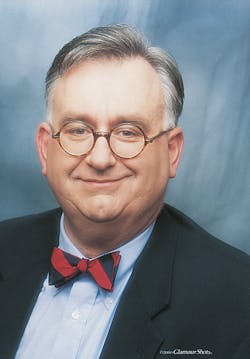There are those in the fire service who make fun of people like me who teach the need for safety. To me, however, safety is perhaps the most important task that faces a right-front-seat leader every single day.
The primary thought that must guide you as you lead your crew lies within the view espoused by the National Fallen Firefighters Foundation’s (NFFF) “16 Life Safety Initiatives.” The title of the program, “Everyone Goes Home,” tells the whole story. You as the right-front-seat leader must ensure that this happens by making safety part of every aspect of your operations.
Firefighting is both an exciting and dangerous job. In far too many cases, people feel that the need to respond rapidly to an emergency trumps the need to respond safely. You must arrive safely to do the job you have been trained to perform. You and your crew cannot help anyone if your apparatus is wrapped around a tree or embedded in the side of a dump truck.
The safety officer
Many sources suggest that every fire department must appoint a safety officer. This should be done as soon as possible after the regular officers of your volunteer fire department have been elected or appointed. To be effective, the safety officer must have a working knowledge of firefighting operations and the ability to stop any unsafe operation. One thing that must be remembered is that command staff has a responsibility to respond to the requests of the safety officer. I have witnessed a number of incidents where problems occurred when the recommendations of the safety officer were ignored or overruled by command staff.
The person riding the right-front seat of the first unit on location sets the tone for safety at an emergency operation. This officer is the first eyes and ears of the department arriving at the scene of an evolving emergency operation. If you fail to become a safety advocate, your actions may place your team in danger.
A number of areas must be considered in the creation of a proper safety attitude in your agency:
- In the station
- Responding to the incident
- Operating at the incident
- Returning from the incident
Many times, fire personnel fail to understand the potential for deaths and injuries during even routine fire station duties. There have been instances of people who were changing light bulbs and fell from the ladders that held them up. I can recall an individual who slipped while mopping a kitchen floor and was lost to the department with a back injury.
Each aspect of your operation must become an integral part of your fire department training program and safety must be taught at every step along the way. During my time as a member of the U.S. Air Force Fire Department, I was exposed to the use of checklists for different operations. Each had a purpose and their use let all of us become familiar with the tasks that made up our daily operational activities. The very act of completing these checklists reinforced the many different tasks in our minds.
It was in the Air Force that I came to appreciate the importance of, and the need for, an active safety program. During this time, I was given my first defensive-driving course in which my associates and I were shown the importance of wearing our seatbelts. Decades before the general fire service began to push for the use of seatbelts, we became believers in the need for them.
The need for these lifesaving devices has become a critical part of the American fire service thanks to the efforts of Dr. Burt Clark of the National Fire Academy. As the individual riding the right-front seat of your apparatus, you have a direct impact on the success or failure of your department’s seatbelt program. If you wear it and demand it of your troops, it will become the daily standard.
Safe driving
Driver training is another very important part of your safety efforts. Members must be trained how to operate the large engines, aerial ladder trucks, elevating platforms and rescue units in our fleets. One task for the person riding the right-front seat is to be sure that every member of your crew is trained to operate the piece of equipment to which you are assigned. This training must be reinforced on a regular basis.
Safety does not just happen. It is the product of proper training, periodic reinforcement and continued emphasis. Teach, demand and live the example of firefighter safety for your people. You can do no less for the people entrusted to your care.
Follow Dr. Harry Carter as he shares his perspectives in his “The View From my Front Porch” blog at http://www.firehouse.com/blogs/the-view-from-my-front-porch
HARRY R. CARTER, Ph.D., a Firehouse® contributing editor, is a fire protection consultant based in Adelphia, NJ. He is chairman of the Board of Commissioners in Howell Township Fire District 2 and retired from the Newark Fire Department as a battalion commander. Dr. Carter has been a member of the Adelphia Fire Company since 1971, serving as chief in 1991. He is a life member and past president of the International Society of Fire Service Instructors and life member of the National Fire Protection Association. He is vice president of the Institution of Fire Engineers-USAmerica. Dr. Carter holds a Ph.D. in organization and management from Capella University in Minneapolis, MN.
About the Author

Dr. Harry Carter
HARRY R. CARTER, Ph.D., who is a Firehouse contributing editor, is a fire protection consultant based in Adelphia, NJ. He is chairman of the Board of Commissioners in Howell Township Fire District 2 and retired from the Newark, NJ, Fire Department as a battalion commander. Carter has been a member of the Adelphia Fire Company since 1971, serving as chief in 1991. He is a life member and past president of the International Society of Fire Service Instructors and life member of the NFPA. He is the immediate past president of the U.S. branch of the Institution of Fire Engineers (IFE) of Great Britain. Carter holds a Ph.D. in organization and management from Capella University in Minneapolis, MN.
Connect with Harry:
Email: [email protected]
